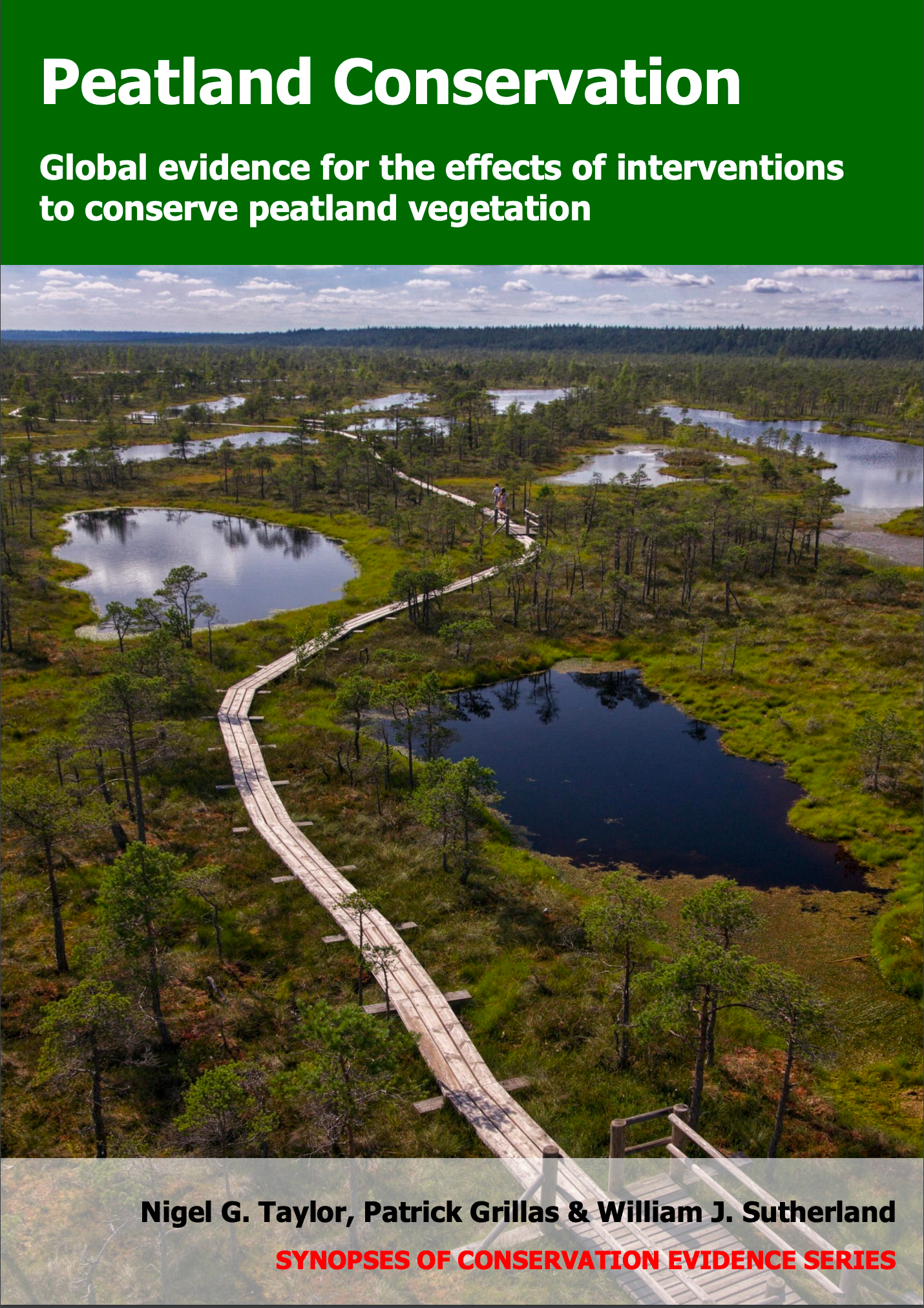Actions to conserve biodiversity
We have summarised evidence from the scientific literature about the effects of actions to conserve wildlife and ecosystems.
Review the evidence from the studies
Not sure what Actions are? Read a brief description.
Search for evidence
e.g. "frogs chytrid"
125 Actions found
Refine
Hide
125 Actions found
Download Actions
| 0 selected |
|
Order results by:
| Action | Effectiveness | Studies | Category | |
|---|---|---|---|---|
|
Wear snowshoes to prevent trampling Action Link |
No evidence found (no assessment) | 0 |
|
|
|
Use prescribed fire to maintain or restore disturbance Action Link |
Unknown effectiveness (limited evidence) | 3 |
|
|
|
Use prescribed fire to control problematic plants Action Link |
Trade-off between benefit and harms | 6 |
|
|
|
Use low impact vehicles for harvesting (wild biological resources) Action Link |
No evidence found (no assessment) | 0 |
|
|
|
Use low impact harvesting techniques (for wild biological resources) Action Link |
No evidence found (no assessment) | 0 |
|
|
|
Use herbicide to control problematic plants Action Link |
Unknown effectiveness (limited evidence) | 1 |
|
|
|
Use grazing to maintain or restore disturbance Action Link |
Trade-off between benefit and harms | 4 |
|
|
|
Use grazing to control problematic plants Action Link |
No evidence found (no assessment) | 0 |
|
|
|
Use fences or barriers to protect planted vegetation Action Link |
No evidence found (no assessment) | 0 |
|
|
|
Use cutting/mowing to control problematic herbaceous plants Action Link |
Unknown effectiveness (limited evidence) | 4 |
|
|
|
Use cutting to control problematic large trees/shrubs Action Link |
Unknown effectiveness (limited evidence) | 2 |
|
|
|
Use covers/barriers to control problematic plants Action Link |
No evidence found (no assessment) | 0 |
|
|
|
Use biodegradable oil in farming machinery Action Link |
No evidence found (no assessment) | 0 |
|
|
|
Use barriers to keep livestock off ungrazed peatlands Action Link |
No evidence found (no assessment) | 0 |
|
|
|
Use artificial barriers to prevent pollution entering peatlands Action Link |
No evidence found (no assessment) | 0 |
|
|
|
Thin vegetation to prevent wild fires Action Link |
No evidence found (no assessment) | 0 |
|
|
|
Stabilize peatland surface to help plants colonize Action Link |
Unknown effectiveness (limited evidence) | 1 |
|
|
|
Slow down input water to allow more time for pollutants to be removed Action Link |
Unknown effectiveness (limited evidence) | 1 |
|
|
|
Roughen peat surface to create microclimates (without planting) Action Link |
No evidence found (no assessment) | 0 |
|
|
|
Rewet peatland (raise water table) Action Link |
Beneficial | 36 |
|
|
|
Rewet peatland (before/after planting) Action Link |
No evidence found (no assessment) | 0 |
|
|
|
Rewet peat to prevent wild fires Action Link |
No evidence found (no assessment) | 0 |
|
|
|
Retain/create habitat corridors in farmed areas Action Link |
Unknown effectiveness (limited evidence) | 1 |
|
|
|
Retain/create habitat corridors in developed areas Action Link |
No evidence found (no assessment) | 0 |
|
|
|
Retain/create habitat corridors in areas of energy production or mining Action Link |
No evidence found (no assessment) | 0 |
|
Download Actions
| 0 selected |
|

Peatland Conservation - Published 2018
Peatland Conservation
Watch this search
If you are familiar with RSS feeds, please click the button below to retrieve the feed URL:
RSS feed for this searchIf you are unfamiliar with RSS feeds, we would suggest reading this BBC article.
Unfortunately, due to the number of feeds we have available, we cannot provide e-mail updates. However, you could use tools such as Feed My Inbox to do this for you.
What are 'Individual studies' and 'Actions'?
Individual studies
An individual study is a summary of a specific scientific study, usually taken from a scientific journal, but also from other resources such as reports. It tells you the background context, the action(s) taken and their consequences.
If you want more detail please look at the original reference.
Actions
Each action page focuses on a particular action you could take to benefit wildlife or ecosystems.
It contains brief (150-200 word) descriptions of relevant studies (context, action(s) taken and their consequences) and one or more key messages.
Key messages show the extent and main conclusions of the available evidence. Using links within key messages, you can look at the paragraphs describing each study to get more detail. Each paragraph allows you to assess the quality of the evidence and how relevant it is to your situation.
Where we found no evidence, we have been unable to assess whether or not an intervention is effective or has any harmful impacts.





)_2023.JPG)














